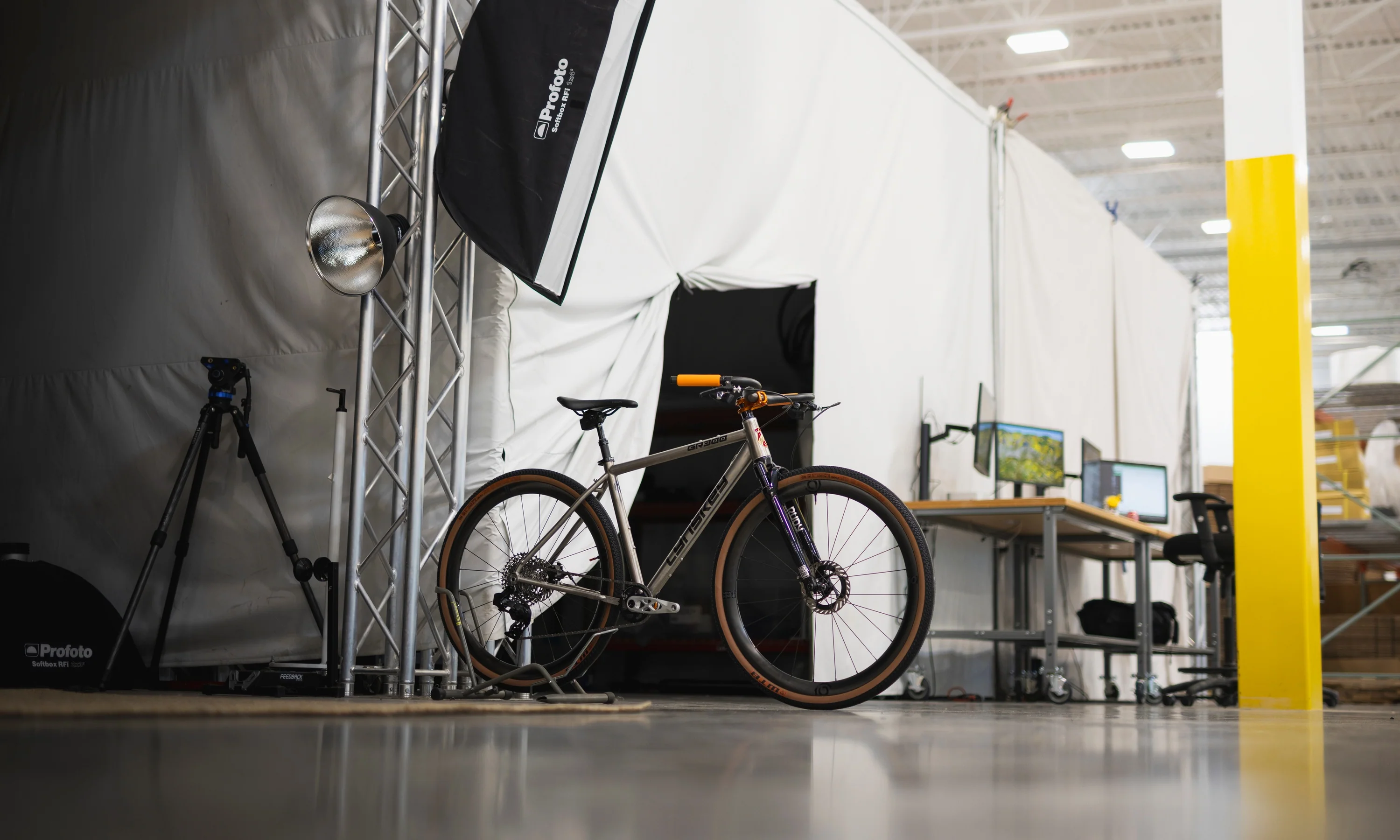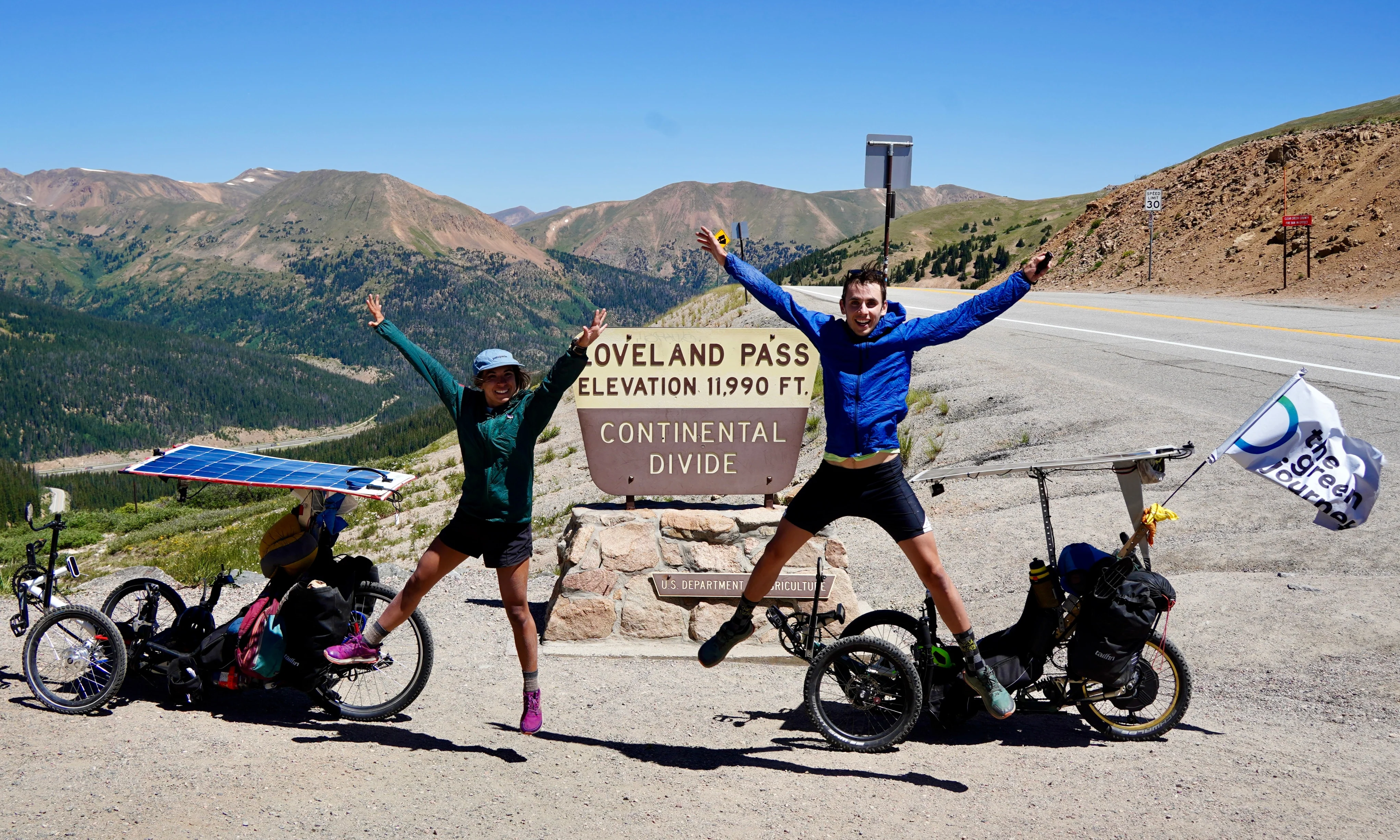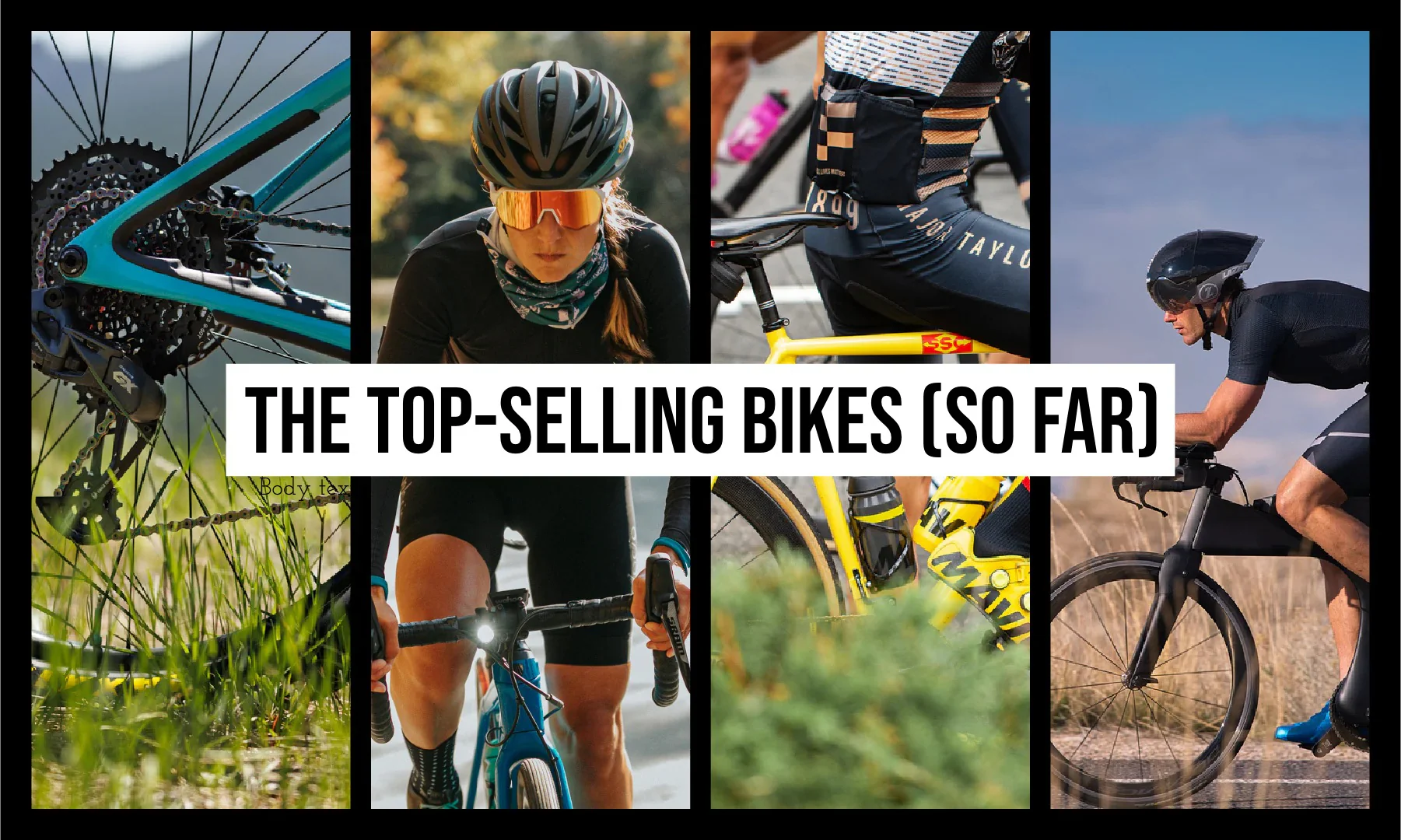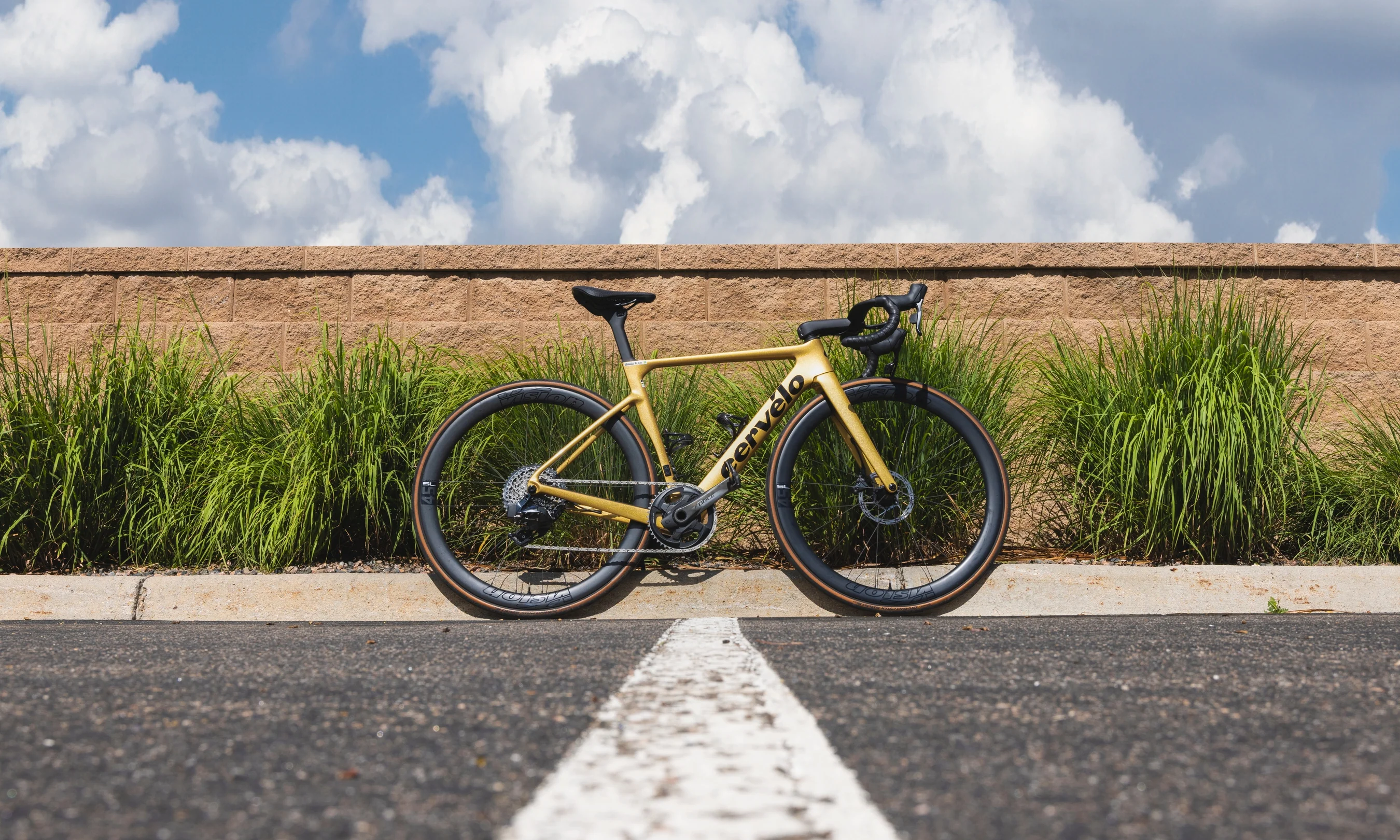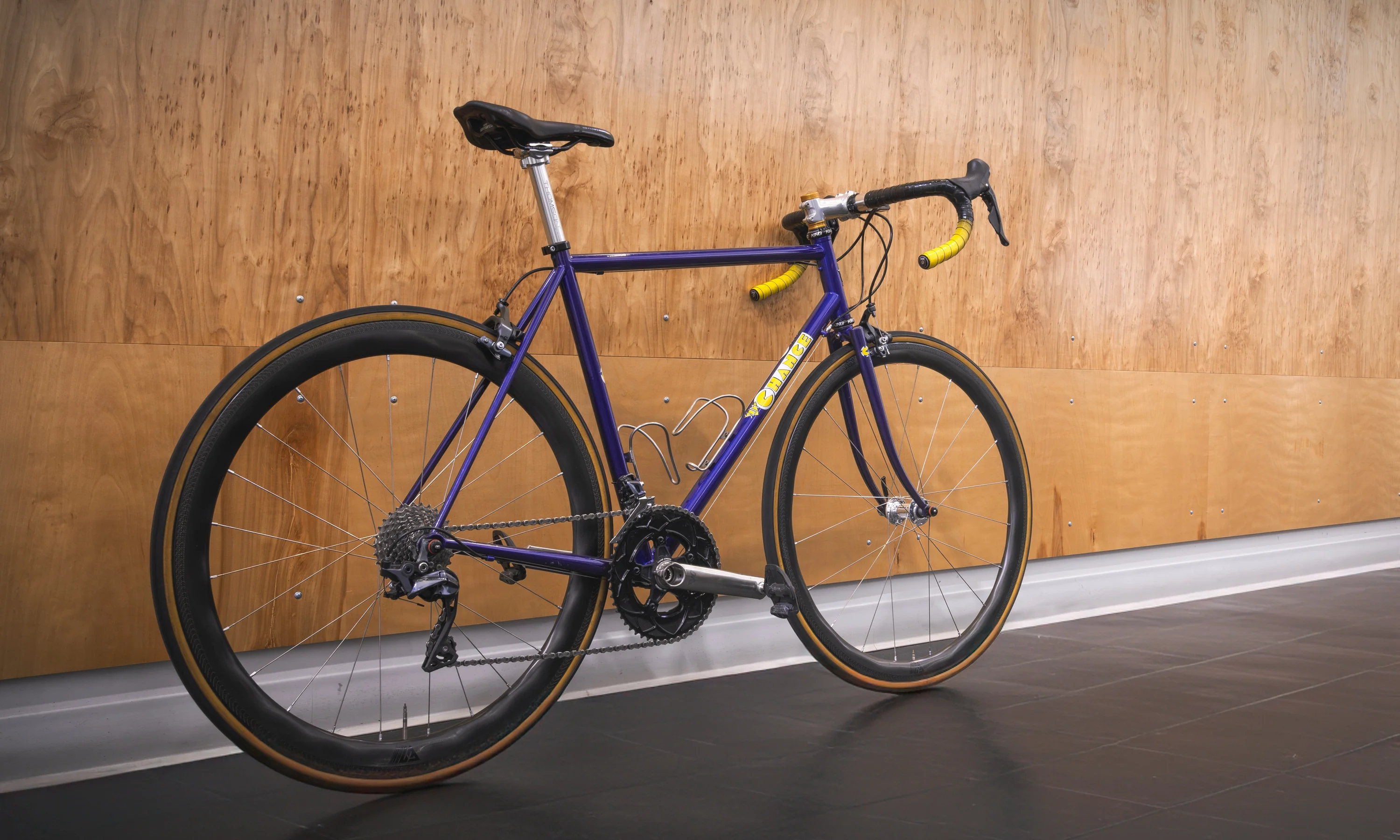With millions of miles of trail out there, there’s no better way to explore than on a bicycle. If you’re shopping for your first mountain bike, then you’re about to embark on a two-wheeled journey full of fun and adventure. Hopefully, you find a reliable trail companion that will stick with you for years to come.
Need help picking the right mountain bike? No problem. We’ll cover what beginner mountain bikers need (and don’t need) and pick out a few of the best beginner bikes from our inventory.
[button]Shop beginner MTB[/button] | [button]Shop all MTB[/button]
Good beginner mountain bikes need…
To be modern but affordable
I suggest in “How Much Should You Spend On Your First Bike” to spend $1,000-2,500 on your first bike. For mountain bikers though, I’d bump the top end up to $3,500, just to see more high-quality options. Sticker shock? Well, you’ll soon discover that $1,000 is very “affordable” in the mountain biking world.
Of course, you don’t have to spend this much, but if your goal is to ride regularly and rack up miles, this price range will get you a bike made within the last 5-7 years that is modern, reliable, resellable, and most importantly, safe. It will be easier to use and maintain, and won’t need any immediate repairs. Plus, it will keep you stoked to continue riding.
To be reliable and serviceable
We suggest beginners look at bikes made by reputable manufacturers because they use drivetrains, suspension, brakes, and components that are designed to handle the rigors of riding off-road. If you’re going to ride “real” mountain bike trails, it’s best to avoid big box/department store bikes for your own safety. We like bikes made in the last decade because they’re easier to work on and find replacement parts.
Beginners should keep an eye out for mountain bikes with entry-level to mid-range Shimano or SRAM drivetrains and brakes. Prioritize bikes with:
- Shimano Deore
- Shimano SLX
- Shimano Deore XT
- SRAM SX
- SRAM NX
- SRAM GX
To have good fit and geometry
|
Measured Size |
Frame Size |
Min Rider Height |
Max Rider Height |
|
13” |
XS |
4' 10" |
5’ 2” |
|
15” |
Small |
5’ 2” |
5’ 6” |
|
17” |
Medium |
5’ 6” |
5’ 10” |
|
19” |
Large |
5’ 10” |
6’ 2” |
|
21” |
XL |
6’ 2” |
6’ 5” |
Buy the correct size. If your mountain bike fits you, it will be more comfortable and easier to ride. If you need more guidance than a basic size chart, check out our Beginner’s Guide to Bike Sizing or contact our expert Ride Guides at rideguides@theproscloset.com, or call us at 866-401-9636 for one-on-one sizing advice. No matter how good the price looks, it’s a bad deal if the bike doesn’t fit you.
Remember my first tip? Well, newer bikes also have more modern geometry, which will give beginners more confidence and allow them to hone their riding skills faster. To learn more about the importance of mountain bike geometry, check out our post on how bike geometry works.
[newsletter]
Good beginner mountain bikes DON’T need…
Carbon
Carbon fiber frames and wheels have a lot of advantages, the biggest being lower weight. But the downside is higher cost. Despite what bike media or snobby riders might say, no one actually needs a carbon mountain bike or wheels. Aluminum and steel mountain bikes are nearly as good, and they’re often much more affordable and durable. The extra durability of metal frames and wheels can also be beneficial for newer riders who will likely end up crashing a few times as they learn. That being said, if you find a nice carbon bike you like in your price range, go for it!
The latest tech
I love riding electronic drivetrains and fancy suspension, but they aren’t must-haves. If you can get them, great! But beginners (most riders, really) will be perfectly happy with old-school mechanical drivetrains and basic suspension that is simpler, cheaper, and easier to service.
Hardtail vs. full-suspension for beginner mountain bikers
Beginners are often told to start on a hardtail mountain bike — a bike with a suspension fork on the front and a rigid rear end. Because there is no rear suspension, hardtails are often more affordable. They’re also easier to maintain because they have fewer moving parts.
The flip-side is that full-suspension bikes are generally more capable and comfortable, especially on rough and technical terrain. This can give newer riders more confidence while they’re learning. Some say hardtails are great tools for new riders to learn essential skills, but that’s up for debate.
If possible, ask experienced riders what they prefer for your local terrain. If you live near smooth and flowy trails, a hardtail might make a lot of sense. If your trails are rocky and rooty, a full-suspension might be the ticket. Finally, if you’re not mechanically inclined, the simplicity of a hardtail might be better for your sanity. No matter what bike you’re on, the key to improving is consistent practice, so the most important thing is to buy a bike that gets you stoked to ride.
[button]Shop hardtails[/button]
The best beginner mountain bikes
These mountain bikes were made in the last 5-7 years and now sell for $1,000-$3,500 — perfect for beginners. You’ll notice most are aluminum, several are hardtails, and they’re all made by well-known manufacturers. All the models listed here are well-reviewed, easy to find, and consistently good options for beginners. They will even appeal to more experienced riders on a budget.
Specialized Chisel
 [product-block handle="2022-specialized-chisel-comp-m"/]
[product-block handle="2022-specialized-chisel-comp-m"/]
The Specialized Chisel is ideal for aspiring XC racers, or riders who want a light and efficient bike for big climbs and epic rides. It takes geometry cues from Specialized’s race-winning Epic hardtail but keeps costs down with an aluminum frame using Specialized’s Smartweld technology.
Specialized Fuse
 [product-block handle="2020-specialized-fuse-expert-29-l"/]
[product-block handle="2020-specialized-fuse-expert-29-l"/]
If you’re looking for a trail hardtail with a bit more downhill capability, the Specialized Fuse is an easy choice. The geometry is longer and slacker than the Chisel’s, so it’s ready to take on bigger and tougher descents. The 130mm fork will help smooth out rock gardens and absorb harsh impacts.
Bombtrack Cale
 [product-block handle="2022-bombtrack-cale-al-m-matt-hazy-green-1"/]
[product-block handle="2022-bombtrack-cale-al-m-matt-hazy-green-1"/]
Bombtrack is the smallest brand on this list, but they come from the world of BMX, so they know how to build tough bikes that last. The Cale is very similar to the Specialized Fuse in terms of geometry and suspension travel, so it’s a great alternative if you’re looking for something from a smaller, more indie manufacturer.
Specialized Stumpjumper
 [product-block handle="2020-specialized-stumpjumper-fsr-comp-27-5-12spd-l"/]
[product-block handle="2020-specialized-stumpjumper-fsr-comp-27-5-12spd-l"/]
Yup, Specialized again. They’re one of the biggest manufacturers so they make a lot of popular bikes. In fact, the Stumpjumper may be the most popular mountain bike of all time. It’s been around since 1981, and these days, it’s billed as the ultimate mid-travel all-rounder. It can handle everything from big cross-country rides to expert-level downhill trails.
Trek Fuel EX
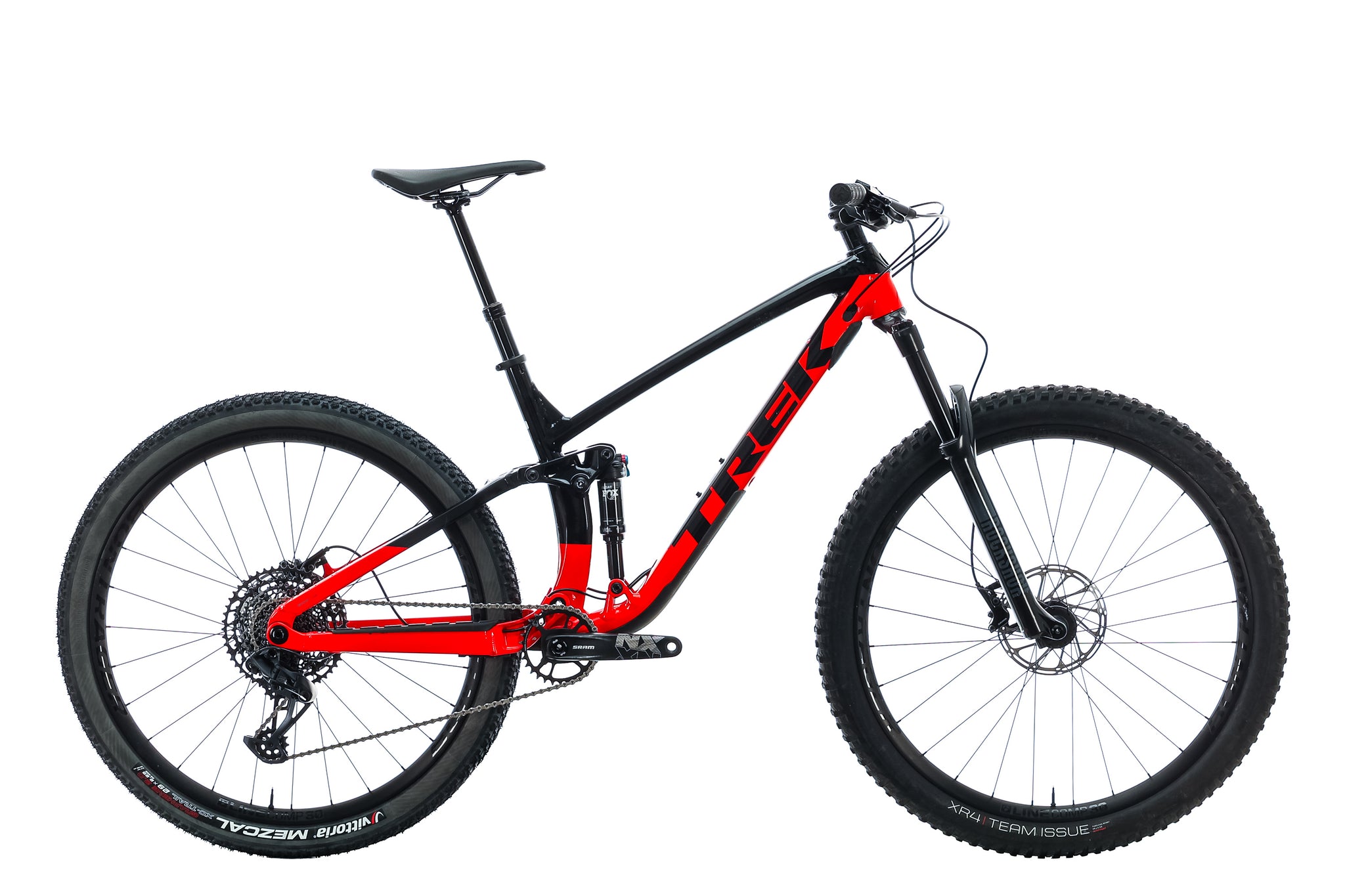 [product-block handle="2021-trek-fuel-ex-7-m-2"/]
[product-block handle="2021-trek-fuel-ex-7-m-2"/]
The main competitor for the Stumpjumper is the Trek Fuel EX. Like the Stumpy, it’s a mid-travel trail bike that can tackle a wide range of trails. It uses Trek’s ABP (Active Braking Point) suspension system, which stays more controlled under braking (new riders tend to brake a lot!) and provides a cushy feeling ride for those seeking more comfort.
Giant Trance X
 [product-block handle="2021-giant-trance-x-29-2-m"/]
[product-block handle="2021-giant-trance-x-29-2-m"/]
Giant is the world’s biggest bike manufacturer and they’re known for building bikes that provide more performance for less money. The Trance X is similar to the Stumpjumper and Fuel EX, but it has a bigger 150mm fork and a nice, slack head tube angle that will help you stay in control on steeper and gnarlier descents.
[button]Shop beginner MTB[/button] | [button]Shop all MTB[/button]
Don’t forget gear and accessories
The bike is important but don’t forget to budget for gear and accessories too. At the bare minimum, wear a helmet and protect your head. As you get more trail time, you may find that bike shorts, knee pads, and other MTB-specific gear are valuable additions to your wardrobe.
For a good breakdown on what you might need, check out our list of essential mountain bike accessories and repair kit essentials.
[button]shop helmets[/button] | [button]shop protective gear[/button]





